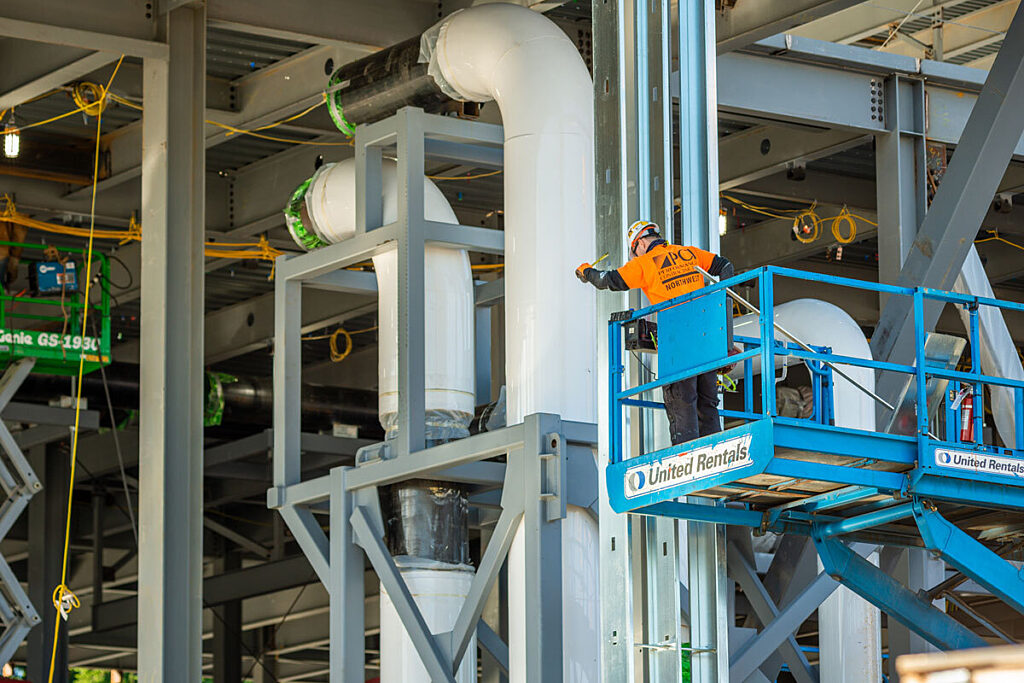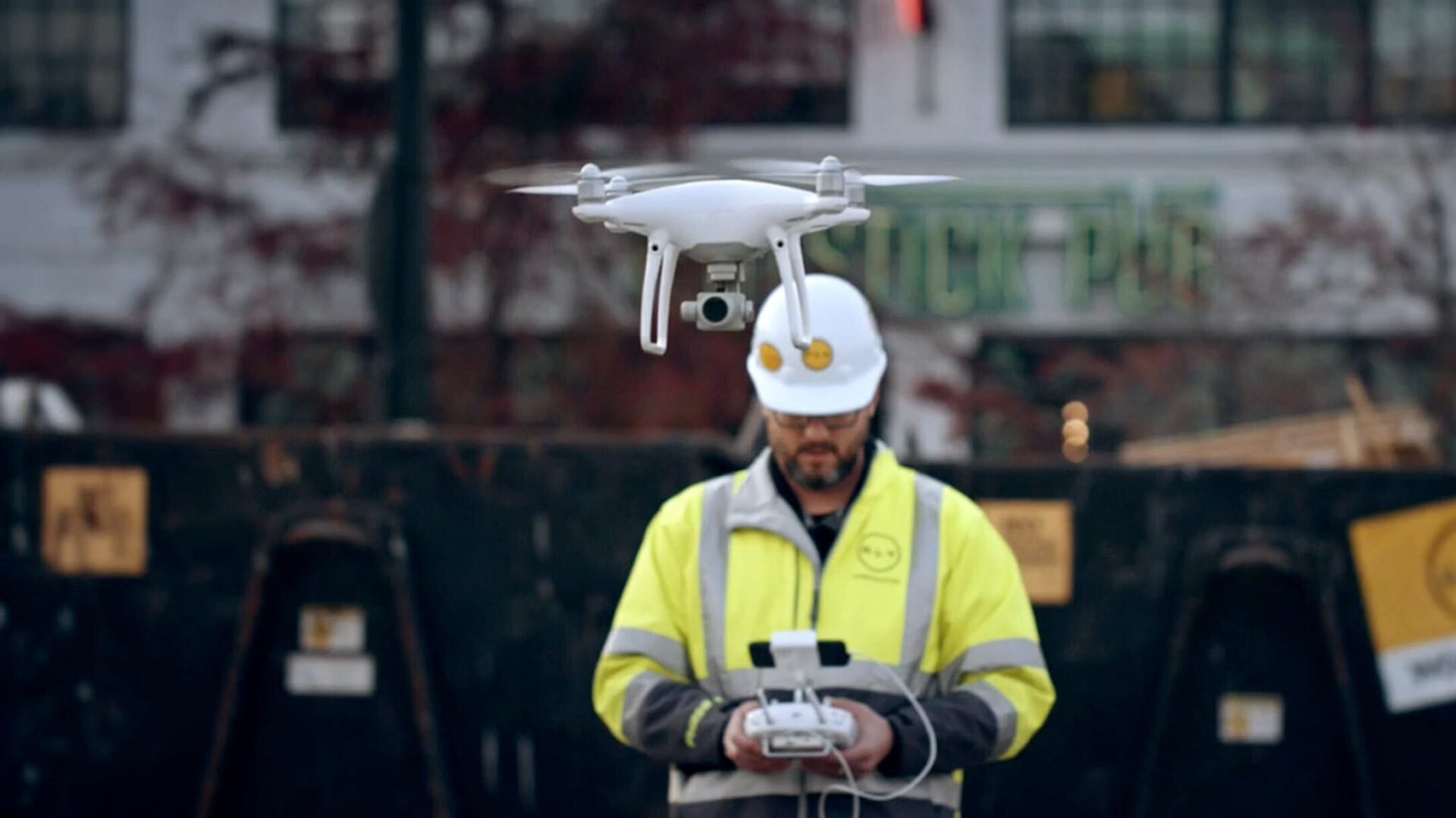Collaborative Delivery

Insights 06.14.2022
Design-Assist: It’s a Team Sport
Adam shares the benefits of early engineer and trade partner involvement on cost, quality, and schedule.
Read More


“If you were an expert on technology last week, you’re in the dark this week.”
This statement rings true for many people—especially those of us in construction. In a risk-averse industry it is tough to find the sweet spot for high-tech adoption when we’re bombarded with new products and ideas on a weekly basis.
How do we choose what to invest in? What is the value? And to whom? Why pay attention to digital transformation in the first place? These questions likely surfaced at your firm in recent years, or maybe just in the last few months. In The Critical Path Podcast with Mary and Jason, Episode 65: Value vs Cool in Construction Tech, GLY Design Manager Trevor Lunde provides some answers informed by his journey along the path of technological change and adoption since joining GLY in 2011.
In an honest, open, and insightful conversation with Arcade Wayfinding principals Mary and Jason Sturgeon, Trevor identifies five key considerations to help successfully navigate technology selection and adoption.
Don’t be dazzled by the promise. New, cool, and cutting-edge is incredibly seductive. But what exactly is it going to do for you? Too often new technologies are a solution in search of a problem.
To evaluate the technology’s value it’s important to be clear about the problem you want it to solve, then determine whether or not this particular tech is the right solution. The “cool factor” always grabs our attention but does little to substantiate value. Interrogate your tech!
What value does it add? To whom? Does it replace three or four traditional steps in project delivery with one new one? Or does it simply replace one step with another? If you can’t find value in it, you won’t get buy-in.
Is it flexible? Can it work with other software or is it adding yet another platform to the mix?
What is its total cost implication? Are you willing to lose $40,000 if a robot crashes? Is it worth subscribing to yet another service? The value provided to the team and project might be great enough that the answer is yes. If not, consider revisiting the purchase in the future once market demand balances pricing.
Do you need it now? You don’t always need to be a first adopter. Be selective. If something fails, you want it to fail quickly, move on, and learn from that failure as you evaluate new things going forward. If something doesn’t work right off the bat, don’t forget about it. It’s okay if something doesn’t provide immediate value. Monitor its progress and you’ll be ready to grab on when it’s a game changer a few years from now.
Without human intelligence tech is just a new toy in a shiny box. Technology alone will not solve our problems. The solutions lie in how we apply our intelligence to first identify a legitimate problem and then leverage technology as a platform to bridge the gaps between tools, people, and processes.
That being said, we must be responsible stewards of technology and help it find the right place within the overall construction process—bringing us closer together to better achieve our goals, instead of driving us apart.
Use tech to solve problems that matter to people. Consider the challenges faced not just by ourselves but by others, sharing resources, and focusing on problem-solving and developing the right solutions.
Humans have to decide which data is useful and what to do with it. Platforms that serve as shared environments, such as BIM 360 and Plan Grid, are host to rich beds of data and information that the team can engage in together and in real time. Tech is capable of gathering all kinds of data. The value comes in deciding what is most useful to the team and the decision-making process.
Tech supports communication—it doesn’t do it for you. Today’s highly complex construction environment requires high levels of communication. Teams need to be flexible, integrated, and founded on shared trust. We cannot afford to have a team of siloed, one-off relationships. Tech can provide the platform but it’s up to us to use it to drive transparency and open communication among a web of partners that think holistically.
Listen. Talk to those who will be impacted by the new technology. To do a proper cost-benefit analysis, especially if you’re the person closest to the subject matter, you need to understand your project team’s current capabilities and needs. Don’t waste time and resources on a tool that may be more cool than useful.
Communicate. People need to understand how a new tool will benefit them and make their lives easier if they’re going to adopt it effectively. Like the design and building process, adopting new technology is also team effort. Everyone involved needs to agree on the goals, understand why you’re testing it out, and stick to an implementation plan. Develop a charter that lays out what the team is trying to achieve and why it’s important. Together, map out milestones to back-check progress and hold the team accountable.
Focus on the field. Communicating value is especially important for boots-on-the-ground team members. Help them understand that the value of a given technology might not be immediately obvious out in the field, but it improves a process for design coordination or construction quality control. If needed, write the technology requirements into subcontracts.
Help the developers and designers behind the technology to evolve it into the best version it can be. Many start-ups are looking for firms to test their software and devices for minimal costs—or even for free. As you give feedback along the way, you are literally participating in the development of a tool tailored specifically to your needs.
Find that person in your firm who has a passion for the research and development of new technology. Give them the bandwidth, and a budget, to research, investigate new products, evaluate the worth, and develop implementation plans. Allow for experimentation and understand that some things might work while others might fail. There’s a point in R&D when interest ramps up on certain technologies as they mature. With a point person in charge of scouting these opportunities, the rest of your firm can focus on their regular tasks and provide proper attention at the right time—once your champion vets the technology and is able to communicate the value.
Product development moves at a breathtaking pace these days, and technology is only doubling in complexity. It’s impossible, and a false economy, to expect anyone on the payroll to dabble in it in their spare time. Smart investments in time, talent, and prioritization will separate the firms that move forward from those that fall behind.
Connect. Have additional questions about technology adoption? Connect with Trevor on LinkedIn!
About Mary and Jason. Mary and Jason Sturgeon are principals of Arcade Wayfinding, which offers professional training and development series tailored to construction industry personnel. Their programs, which are both fun and informative, are designed to keep teams efficient, stress low and morale high. Mary and Jason host The Critical Path Podcast covering a range of hot topics in the industry from company culture to successful project scheduling. Tune in to their next show or check out past recordings here.
Tags:

Director of Virtual Design+Construction
Associate DBIA™
Trevor is an industry innovator with over 22 years of experience devoted to creating synergy between architectural design and technical construction. Trevor leads strategic business planning for the company’s Virtual Design and Construction [VDC] and technology efforts and provides companywide training on GLY delivery philosophy and VDC process. Having been both a project architect and a construction manager, he identifies valuable opportunities for coordination and collaboration amongst designers, engineers, and tradespeople. Trevor respects each discipline’s individual process and expertise while ensuring constructability. Trevor’s downtime is spent playing with his kids or fishing.